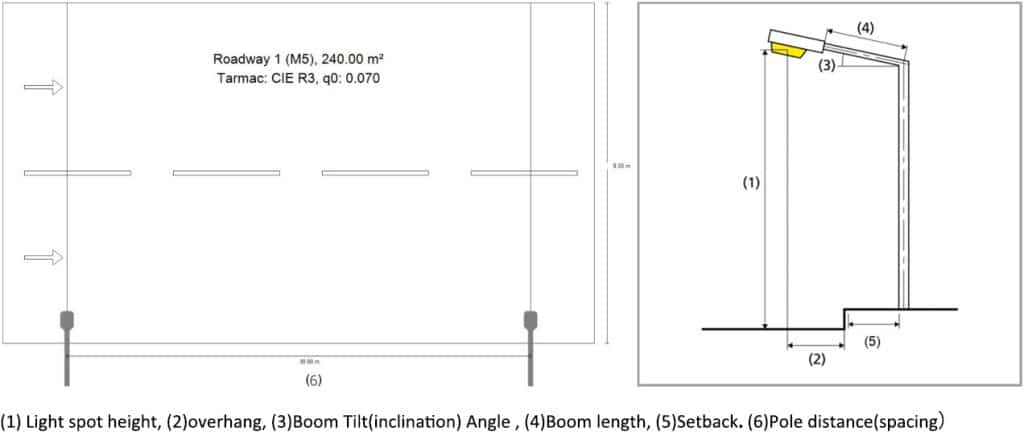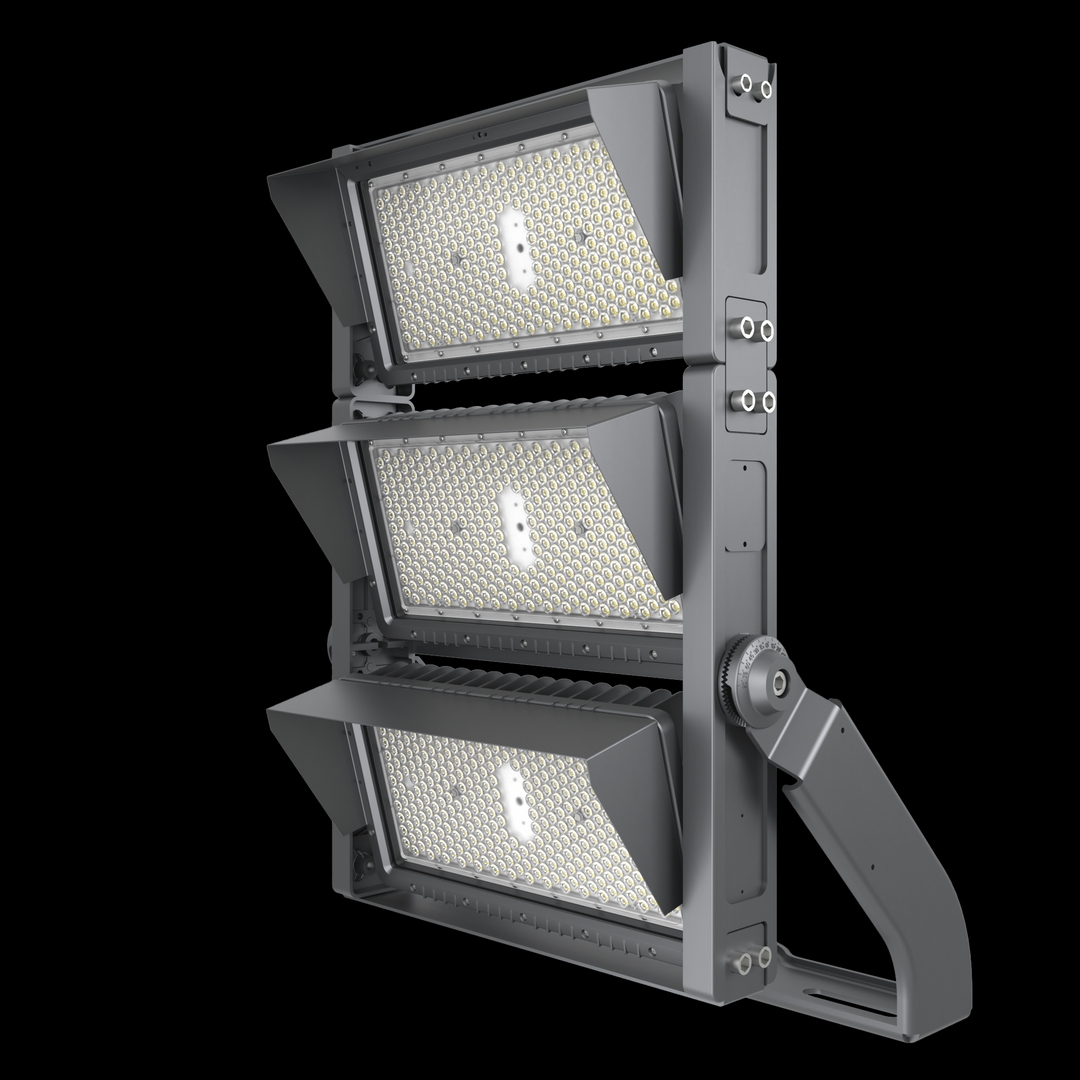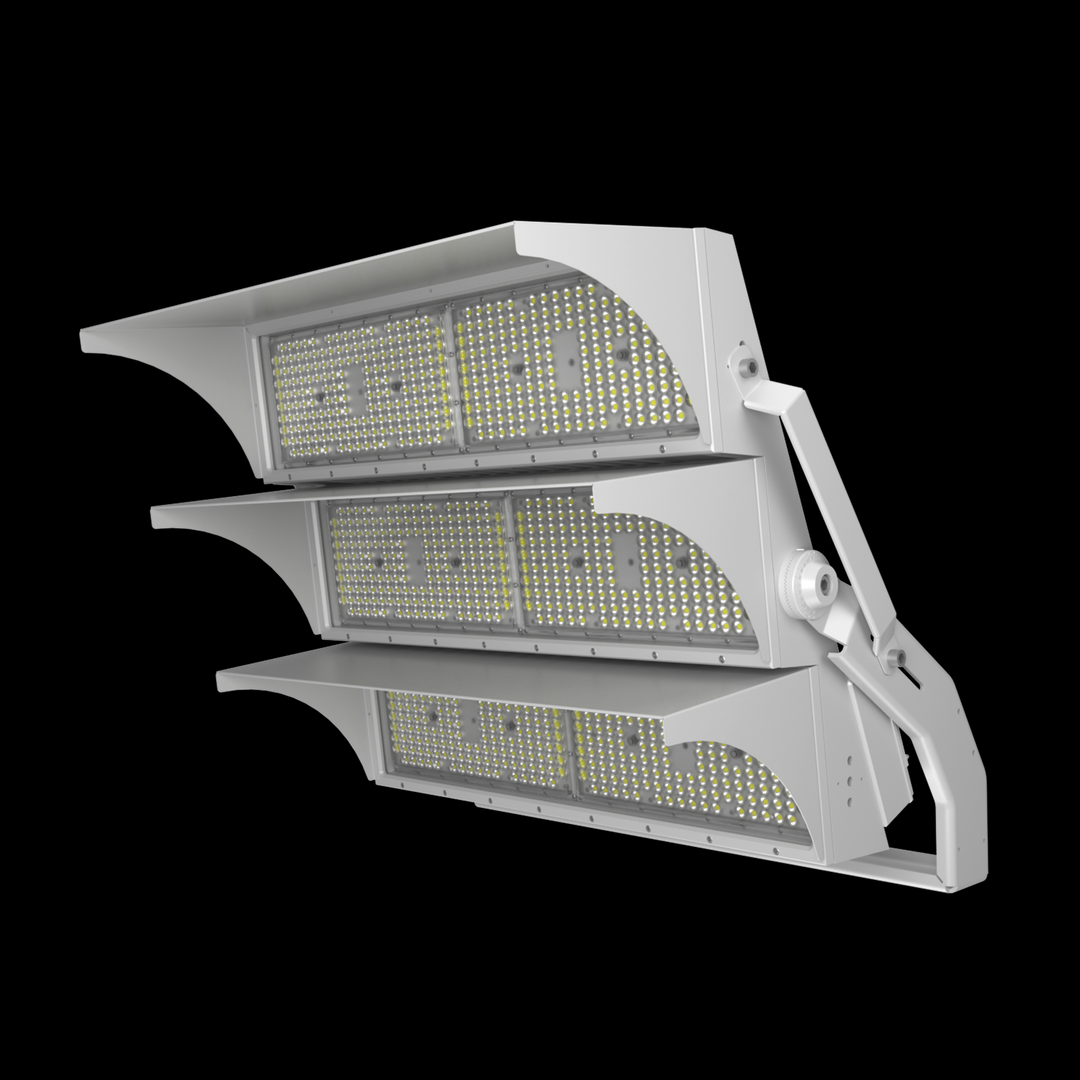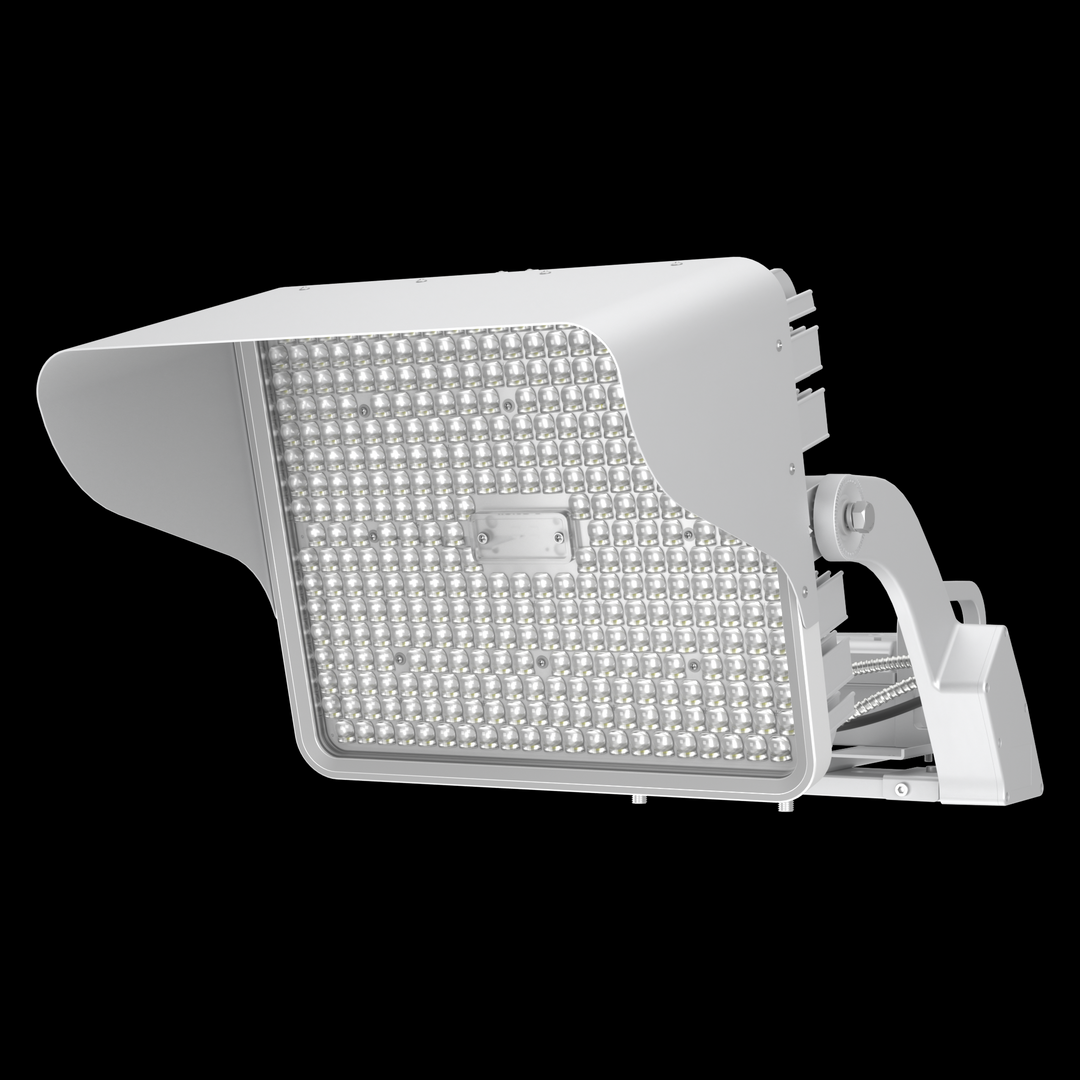Street Lighting LED Luminaire Arrangement
The LED street light layout plan mainly includes lamp selection, layout design, and energy consumption assessment, aiming to improve lighting effects, ensure residents' safety, and reduce maintenance costs.
Introduction
Street light LEDs should be installed alongside or in the middle of the road or suspended from wires above the road to provide lighting. Because the road conditions in these areas are more complicated, street lighting is also required at intersections and roundabouts.
On roads or highways with lighting needs, street lighting can provide a safer, more comfortable, and more convenient environment for vehicles and pedestrians to move about at night. In addition, street light LED should be effectively managed to facilitate future maintenance, replacement, or renewal to provide long-term lighting services for traffic flow and pedestrians. Below, we list several important roles of street lighting.
- Reduce the risk of accidents at night
- Fight against crime
- Assist in the protection of buildings/property
- Creating a safe and pleasant living environment
- Stop vandalism
Importance of street lighting design
In the previous section, we talked about the importance of street lighting. So how can we have the right street lighting effect? We think street lighting simulation is essential. Street lighting design involves selecting and installing lighting equipment ( View more about the case study of Street light LED) to maximize visibility and increase safety while meeting users' needs with minimal energy consumption. A reasonable street lighting design, Hylele believes, should include the following two points: 1. The choice of lighting standards, here mainly refers to the road illumination, brightness, glare, uniformity and so on. 2. Implementation of road lighting simulation to confirm suitable lamps, pole arrangement, pole height, pole spacing, pole arm, tilt angle, setback, etc.
If you don’t know about point 1, we recommend checking out another blog regarding street lighting design. For the latter, Hylele believes that the choice and setting of street light LED and street light poles have a significant impact on the appearance of road schemes/ city construction, and we should plan street lighting as a whole at the initial stage. In addition, in historic towns and protected areas, particular attention should be paid to the aesthetic qualities of street lighting design and installation, while equal care should be taken to avoid light pollution, especially in rural areas.
Luminaire arrangement of street lighting
There are four basic types of street lighting arrangements for motorways or highways, which we describe as below.
Single-sided arrangement(arrangement at only one side, upper side or bottom side)
Single-sided arrangement, that is, all lamps are located on one side of the road, and should be used when the width of the road is less than or equal to the installation height. This type of lighting arrangement is usually suitable for narrower roads. Usually the installation height is lower at about 6 meters (20 inches). In addition, as the lens design of street lamps becomes more and more sophisticated, this type of lighting can sometimes be used to illuminate wider roads.
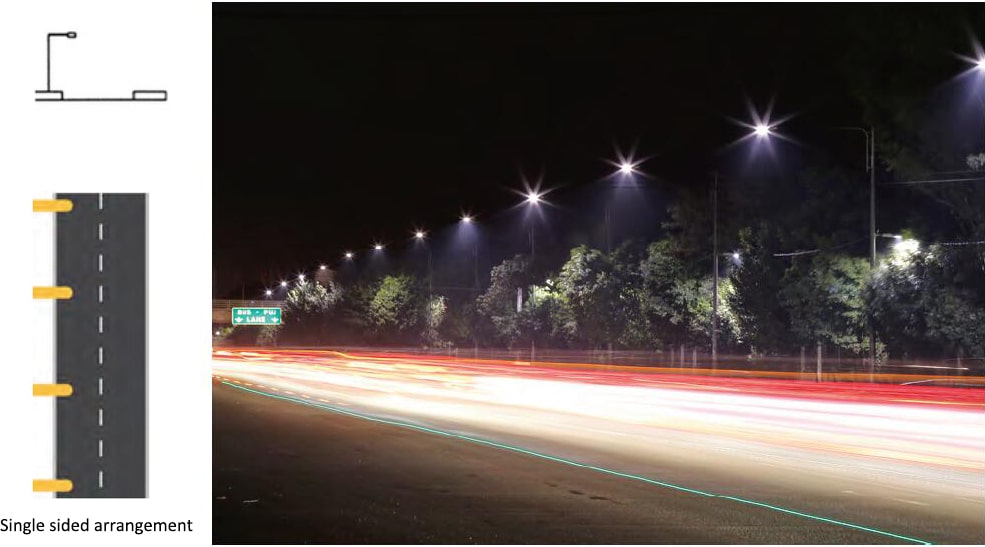
Staggered arrangement(two-sided arrangement offset)
Staggered arrangement, when the road width is equal to 1 to 1.5 times of the installation height, the lamps are alternately placed on both sides of the road in a “zig-zag” or staggered style. This type of lighting arrangement is usually suitable for medium-sized roads. Practice has proved that the lighting effect (uniformity) of a staggered street lighting arrangement is often improved without increasing the height of the pole.
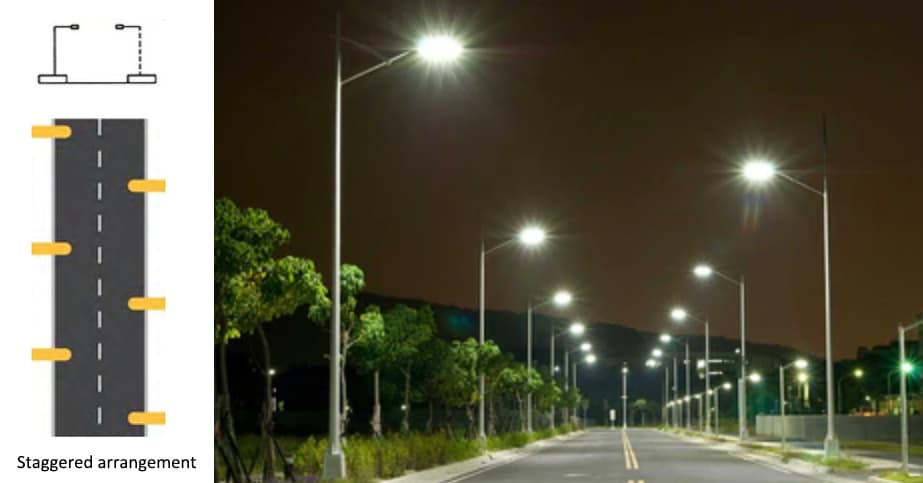
Opposite arrangement(two-sided arrangement)
In the opposite arrangement, the lamps are placed opposite each other along the front of the road. When the width of the road is greater than 1.5 times the installation height, it is more suitable to go with this arrangement. The opposite arrangement is usually suitable for medium to wide roads. This kind of lighting arrangement is very common on main roads, mainly because of its convenient construction and excellent lighting effects.
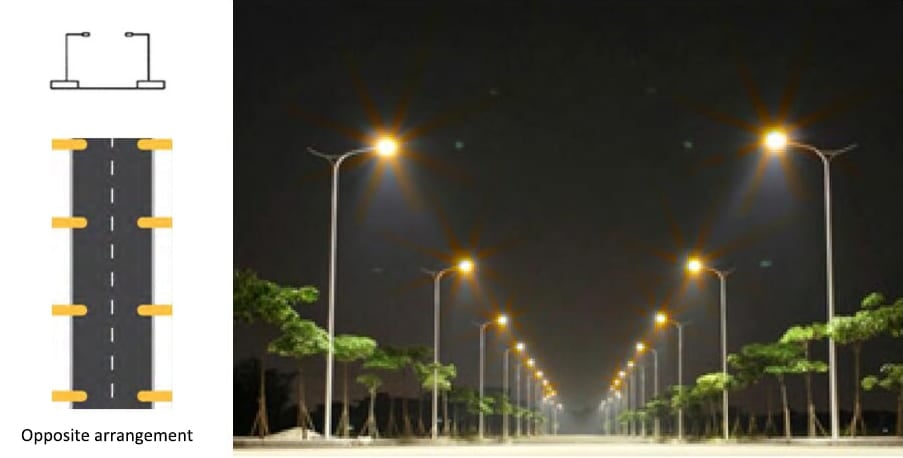
Twin central arrangement(median arrangement)
In a twin central arrangement, the lamps are installed on the T-shaped mast in the middle of the central island of the road. When the road width is less than or equal to the installation height, the installation height of the lamps should be used. This type of lighting arrangement is usually installed on taller poles and large roads. This type of light distribution method often requires a wide isolation island on the road, which facilitates the installation of light poles and distribution boxes.
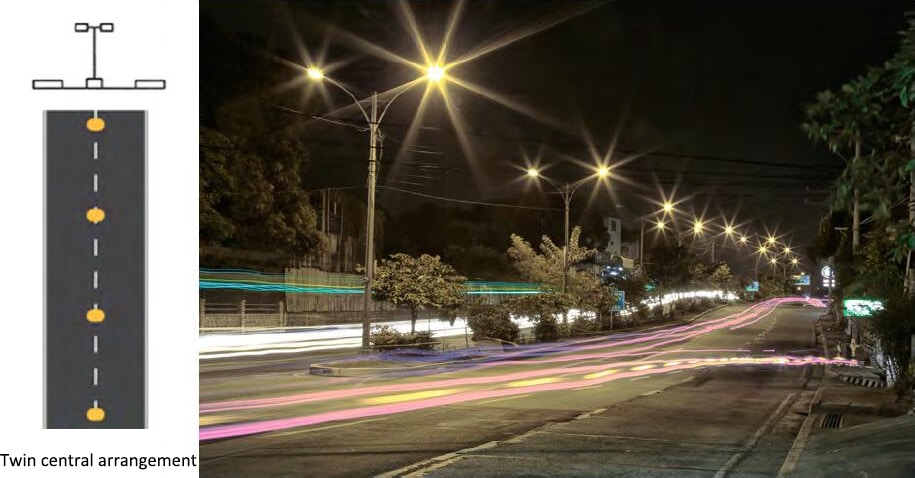
Street light height
Street light LED are installed on high lamp posts. And the roadway light poles are generally in 4 meters(13 feet), 6 meters(20 feet), 8 meters(26-27 feet), 10 meters(33 feet), 12 meters(40 feet). Below, we list the different. The height of the light pole is generally the application place.
- 10-20 feet, suitable for residential areas, park roads, and country roads
- 20-27 feet, suitable for most urban roads, commuter roads between urban and rural areas
- 27-33 feet, suitable for urban main roads, expressways, and highways, etc.
- 33-40 feet, suitable for wider roads with high traffic flow, road intersections
Proper Placement of Pole
Pole distance from the roadway(Setback)
This is the distance from the light pole to the road. Because the street lights are generally set on the outside of the street curb, the light poles have a certain horizontal distance from the motor vehicle lane or the non-motor vehicle lane. This horizontal distance is also usually called a setback.
For most arrangements, setbacks will choose 1 foot to 2 feet. Light poles that are too close are not suitable for installation and are easily affected by accidental traffic accidents, which in turn can cause more accidents. Too far away, and the lighting effect (light level and uniformity) is reduced, and even further distances from the fixture create shadows at low light levels. For the twin central arrangement, the setback is half the width of the isolation island.
Pole Boom(Arm) Length
The use of arms brings the light source closer to the road while keeping the poles positioned away from the edge of the road. Depending on the application, the arm may be a single and/or double arm or a davit arm on top of the pole.
There are several different arm lengths and styles of arms used. Single arms are typically available in 1.5m, 2m, and 2.5m lengths. Double arms, arms face 180° apart and are used to illuminate the opposite lane of a two-way lane.
Overhang
Overhang is the horizontal distance from the center of the light fixture mounted on the bracket (poles) to the edge of the driveway. In general, the overhang should not exceed a quarter of the installation height to avoid reduced visibility from shoulders, obstacles, and sidewalks. In addition, due to the influence of the trees on the road, the overhang will be increased to reduce the influence of the trees on the road. Also, additional street lights should illuminate the sidewalk.
Boom Tilt Angle (Boom Angle)
The boom tilt angle is the angle between the luminous surface and the horizontal plane (the surface parallel to the ground). Normally, the larger the tilt angle, the higher the uniformity in general. In the past, there would be a tilt angle during actual road installation, which was relatively large and had corresponding problems. The uncomfortable glare increases as bright light enters the driver’s eyes. Therefore, Hylele recommends that the tilt angle should be kept below 15 degrees. As more and more project parties require zero uplight, this angle is usually 0. Thanks to the improvement of the lighting distribution, Hylele street lights are often installed on light poles with a 0 tilt angle. Even if the tilt angle is 15 degrees, by adjusting the fitter, we can achieve 0 degrees to reduce the impact on the natural environment.
Pole to Pole distance(Spacing)
Spacing is the distance between two consecutive luminaires along the centerline of the road. Usually spacing equal to 3 to 4.5 times is suitable for many road lighting projects. The smaller the pole distance, the better uniformity can usually be obtained, but we will need more light poles, which is not conducive to controlling the cost of the project. The longer the poles distance, the poorer the uniformity, because the illumination and brightness are often lower in places farther away from the lamps, which can easily cause discontinuity in lighting and affect traffic safety. Taking an 8-meter light pole as an example, we generally recommend that the distance between the light poles is about 30 meters (single side lighting). If it is installed on the opposite side or staggered, the distance can be increased to 35 meters or more. Below we have attached a pictures shows the setback, boom length, overhang, boom angle, spacing which gives a profound image of these parameters.
